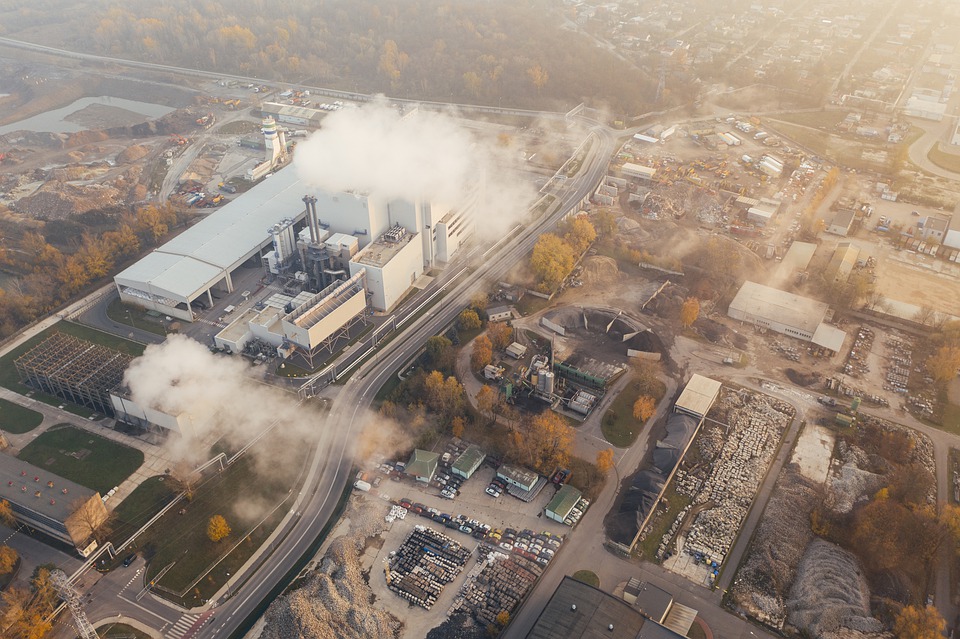
The enhanced greenhouse effect is one of the most important environmental topics of our time.
However, it’s also one of the most complex, which is why it can create confusion around what it is and how it works.
In this guide, we will break down the science behind the enhanced greenhouse effect and discuss its effects on global climate change. We will also provide some ways for you to get involved in combating this serious problem.
What is an enhanced greenhouse effect?
The enhanced greenhouse effect refers to the process by which human activity has increased emissions and concentrations in the Earth’s atmosphere more than expected.
In this article, we’ll take a closer look at what’s causing the enhanced greenhouse effect, how it affects our climate and some ways we can help combat this problem.
What causes climate change?
Climate change – changes in Earth’s climate over time – has been exacerbated by the enhanced greenhouse effect.
The effects of climate change, which include rising sea level, melting glaciers, and shrinking snowpacks – all of which can have negative effects on humans, animals, and habitats – can largely be attributed to the enhanced greenhouse effect.
What causes the enhanced greenhouse effect?
The greenhouse effect describes the way that gasses in the earth’s atmosphere trap heat. This is an essential process that keeps our planet at a hospitable surface temperature.
However, increased CO₂ levels in the atmosphere, caused by carbon emissions, contribute to more heat being trapped within the atmosphere. This effect, known as the enhanced greenhouse effect, has caused the average temperature of the earth’s surface to increase over time – the phenomenon known as global warming.
Carbon dioxide, greenhouse gasses, and fossil fuels
Carbon dioxide is released into the atmosphere when fossil fuels like coal and oil are burned to generate electricity or power vehicles.
While CO₂ makes up only about 0.04% of Earth’s atmosphere, its ability to trap heat means that even small additions can have a big impact on our climate.
The primary cause of rising CO₂ levels is burning fossil fuels such as coal and oil for energy.
However, we’re emitting more than just carbon dioxide into the atmosphere — we’re also releasing other greenhouse gases, such as:
- Methane: from livestock and agriculture operations
- Nitrous oxide: emitted during industrial processes
- Water vapor: from irrigation and evaporation
The combined effect of these gasses causes the enhanced greenhouse effect and contributes to global warming.
What impact does the enhanced greenhouse effect have on our climate?
The enhanced greenhouse effect has already made Earth warmer – our planet’s average temperature has increased by 0.14℉ each decade since 1880.
As temperatures continue to increase, many harmful effects have started to occur, including:
- Rising sea levels as a result of melting glaciers and ice caps
- More extreme weather events, such as hurricanes, droughts, and wildfires
- Changes in precipitation that can lead to floods and water shortages
- Species extinction as habitats become unsuitable for many plants and animals

What evidence do we have that the enhanced greenhouse effect is causing climate change?
Three primary lines of evidence show anthropogenic climate change is happening:
Global warming
While the earth is naturally subject to global temperature fluctuations, the most dramatic increase in warming has occurred over the last 40 years, at a rate of 0.32℉ per decade. This is almost double the previous rate of warming, and corresponds with a period in human history in which use of fossil fuels saw a dramatic increase.
Rising CO₂ levels
Since the Industrial Revolution began in 1750, atmospheric carbon dioxide concentrations have risen by about 50%.
These numbers continue to grow at an alarming rate due to fossil fuel consumption, deforestation, and other human activities that release global greenhouse gas emissions into our atmosphere.
Melting ice caps or glaciers
Over time, these changes can make Earth warmer which causes sea levels to rise, leading to higher levels of coastal erosion and threatening coastal communities.
This has already had devastating consequences such as the flooding of coastal cities like Miami Beach, FL, where residents have been forced to either adapt by building new infrastructure or by leaving altogether.
How to mitigate the effects of the enhanced greenhouse effect
Since the enhanced greenhouse effect is largely driven by greenhouse gasses, you can help by reducing your personal carbon footprint, and by encouraging businesses and governments to follow suit.
Your carbon footprint refers to the amount of carbon emissions that your lifestyle produces, for example through activities such as driving, flying, or heating your home or office.
If everyone on Earth reduced their energy consumption, we could slow down global warming significantly. However, changes need to be made on a larger scale – by global organizations, big businesses, and governments – to fully tackle the scale of the problem.
Here are some simple ways that you can get involved in making a difference:
Reduce – or offset – your carbon footprint
Reducing your carbon footprint is a great place to start reducing your personal impact. Some ways to do this include:
- Eating less meat and dairy
- Recycling more often
- Driving less and/or walking or taking public transport
- Limiting air travel
You can also offset the carbon emissions that you do produce by purchasing carbon offsets, or by taking part in green initiatives such as tree planting.
Support renewable energy
Supporting renewable energy sources – like wind turbines or solar power – help us to avoid relying on greenhouse gas-producing fossil fuels.
Over time, moves towards more renewable energy sources can help to reduce carbon emissions and decrease the enhanced greenhouse effect.
Use public transportation
Using public transportation instead of private vehicles is another way you can reduce your carbon footprint. Buses, trains, and trains typically use less energy than cars do per passenger mile and emit fewer greenhouse gasses as well.
Support environmental organizations
Supporting environmental organizations like Greenpeace or EarthJustice, that work to protect our planet’s future by fighting climate change, can be a great way to get involved and make a difference.
These organizations are dedicated to protecting our planet through activism and education.
Showing support for climate-friendly politicians can be another way to demonstrate your support for environmentally-friendly policy at all levels of government. Over time, this can contribute to changes in national and even global environmental legislation.
Donate
Donating money for research into new technologies can be another way to contribute to greener processes.
Carbon capture sequestration (CCS) systems, for example, can help reduce CO₂ emissions by capturing and storing carbon dioxide before it gets released into the atmosphere. This can help fossil fuel combustion to make less of a contribution to global warming.
Buy local
Buying local food instead of opting for imported goods can help to cut down on transportation, use of fuel, and the carbon emissions that occur as a result.
Plus, you can enjoy the bonus of supporting local businesses while enjoying locally produced items and produce!
Reduce plastic use
There are numerous ways to decrease your reliance on plastics, from taking a thermal cup to your local coffee shop or opting for products made from recycled materials, to avoiding fast fashion and single-use items.
Using reusable plastic bags at home and work can be a great place to get started. Reusable bags are often more durable than disposable shopping bags, which frequently end up polluting our oceans or waterways, damaging wildlife, or simply being disposed of in landfills.
Commit to learning more about climate change
The more you know about climate change, the easier it will be for you to make informed decisions that can have a positive impact on our planet’s future.
Educate yourself by reading articles like this one, watching documentaries about global warming, or attending public lectures at your local university or community center.
We must reduce greenhouse gas emissions if we want to prevent further global warming and the effects of climate change on our planet.
We need to encourage everyone in society, from individuals up through to our governments, that all of us can do our part.

How can governments and businesses be more environmentally responsible?
Governments can enact policies and laws that support renewable energy, reduce emissions from factories and other businesses, and create incentives for people to adopt sustainable practices.
Businesses can install green technologies in their operations, develop products made with fewer harmful chemicals, and increase the efficiency of their production processes.
There are many ways governments can take climate action:
Taxes, subsidies, regulations
These would help create incentives for businesses and individuals alike to make them more environmentally friendly practices such as using renewable energy sources instead of fossil fuels.
They can also encourage investments into research projects looking at new forms of technology that could benefit society from an environmental standpoint.
Laws
Governments can enact laws that would make it illegal to produce or use certain chemicals, mandate the use of renewable energy, or require businesses to adhere to specific sustainability guidelines to operate.
Public transportation
Many cities have excellent public transportation systems that people can use instead of driving. Accessible public transportation can help reduce emissions from automobiles and ease traffic congestion.
Green infrastructure
Governments can invest in green infrastructures such as parks, trees, and rain gardens which would improve air quality and help regulate regional climates.
There are many things we can all do to help mitigate the effects of climate change on our planet – some small changes we can make in our everyday lives and others that might require bigger shifts in how we currently generate and use energy
By working together, we can create a brighter tomorrow for ourselves and generations to come.
If you’re interested in finding out more, you can start by checking out the following organizations:
- Greenpeace
- EarthJustice
- 350.org
- National Resources Defense Council (NRDC)
- Union of Concerned Scientists (UCS)
- Climate Reality Project
- The Climate Mobilization Project
Go carbon zero. Change the world.
If you’re looking for a green credit card that not only helps the environment but also gives you rewards for using it, the Aspiration Zero credit card is perfect for you.
So what are you waiting for? Start living a more sustainable lifestyle and apply today!

